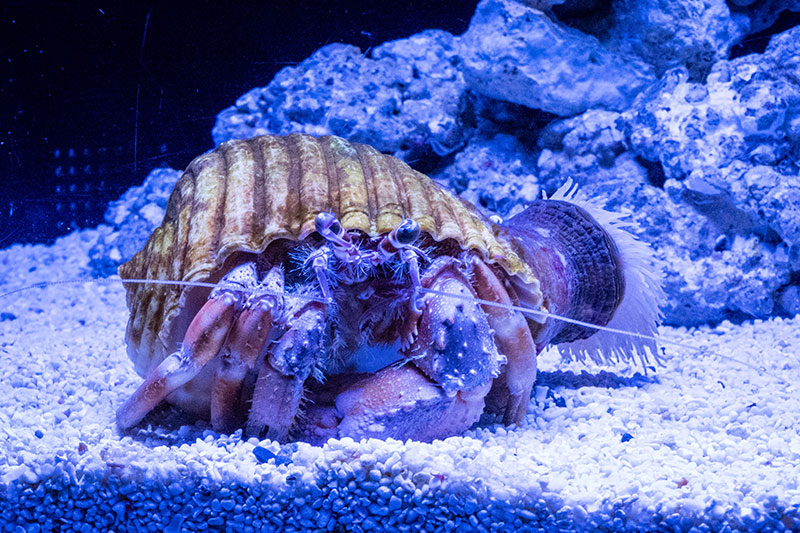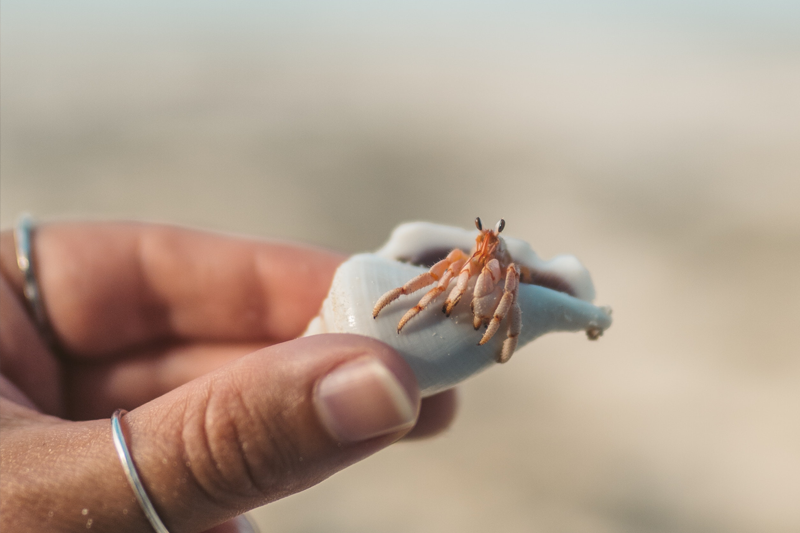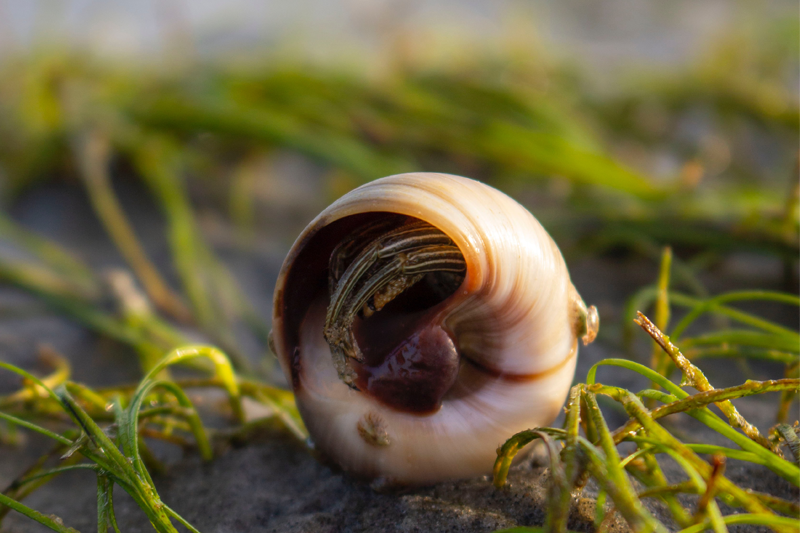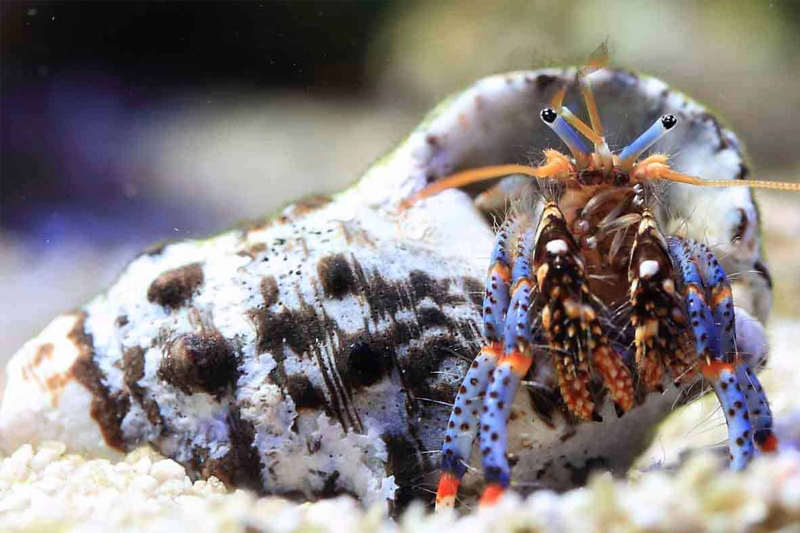So when should you clean their habitat? Usually it should every 2-3 days, depending also on how many hermit crabs you’re taking care of and how much uneaten food is left in their tank. Cleaning their habitat involves you wiping and cleaning the walls and accessories like artificial corals or stones they are climbing to.
This also involves you scooping the substrate to remove any of their feces and leftover food. Deep cleaning is necessary as well every 3-6 months which involves the same, but this time sterilizing accessories and their food & drinking bowls as well.
Cleaning it on a regular basis prevents your hermit crabs from getting sick and it also improves their quality of life while in captivity which also means prolonging their life.
Common signs that your crabitat needs some cleaning ASAP:
- If the water becomes cloudy and murky, especially if you’re taking care of aquatic hermit crabs
- The presence of excessive algae, which obstructs you viewing their tank
- When the molds starts to appear on the walls of their tank
- Foul smell is now emanating from their tank mostly due to rotten uneaten food or their feces
- Your hermit crabs are constantly inside their shells which is a clear sign of stress due to unsanitary surroundings
What You Need in Cleaning their Tank
The stuff you need are easy to find in your home or buy in groceries or supply stores:
- Clean cloth, you may need an extra if your hermit crabs are housed on big tank
- Cleaning solution (half vinegar and half water)
- Boiling water for sterilizing their accessories and food and water bowls
Once you have everything above, you can start the process of cleaning
Tips for Cleaning their Crabitat
- If you’re going for deep cleaning, make sure you set-up a temporary tank for your hermit crabs wherein they can stay in for a day or two, depending on how long you’re going to clean it. And for that, make sure their temporary tank has the suitable temperature and humidity like in their tank since this will avoid any stress that they may experience.
- Ensure that none of your hermit crabs are going through molting phase, since if one of them are then be extra careful since they are very sensitive during this time. Separate the molting crabs from the non-molting crabs. If you’re not sure about what are the signs of them about to molt or they are already molting, make sure you read about our guide here.
- To be able to clean the sand of the crabitat, make sure you use a sand scooper to filter out debris or wet clumps of sand.
- For deep cleaning process, remove their sand completely out of their tank, you may either replace them completely with something new or you can reuse them. If you’re going to re-use them. Put them on a thin layer of tray and bake it in the oven for 250 degrees Fahrenheit (121 degrees Celsius) for around 30 minutes. Then let it cool before you put it back on their tank. Doing this will get rid of any bacteria that remains on the sand.
- Hermit crabs are highly sensitive to chemicals especially with bleach, so it’s highly recommended that you use vinegar instead in your cleaning solution – half purified water and half vinegar. I repeat, do not use any bleach in cleaning as this will harm them, if you do not have any choice but to use one, make sure you rinse the area properly that has contact with bleach and let it sit for at least 24 hours before you transfer back your hermit crabs.
- As for their empty shells and toys, it’s recommended to sterilize them by boiling for to 2-3 minutes. Do not sterilize or boil the rocks, organic wood, and live plants. You can clean them by wiping with warm water. Let them dry completely before putting it back on the crabitat.
- As for the tank, clean the sides, top, and bottom with a cloth, just to remove any molds or algae covering the tanks. Rinse properly and leave it dry before putting back all of the items in the crabitat.






